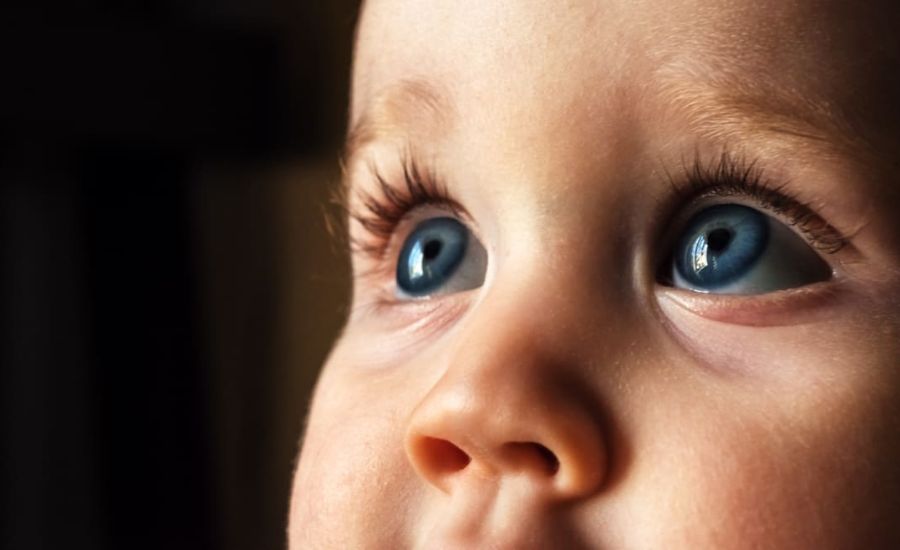
Predicting your baby’s eye color can be an exciting part of the journey to parenthood. A baby eye color calculator with grandparents’ insights gives you a fun, science-backed way to estimate your baby’s potential eye color. This guide explores how these calculators work, why grandparents’ genes matter, and what to keep in mind when using them.
How Does a Baby Eye Color Calculator Work?
A baby eye color calculator uses genetic probabilities to predict a child’s eye color based on the parents’ and grandparents’ eye colors. Eye color is determined by multiple genes, primarily two key ones: OCA2 and HERC2, which control the production of melanin in the iris.
When you input data about the eye colors of parents and grandparents, the calculator processes this information to estimate dominant and recessive gene interactions.
Why Include Grandparents in the Calculation?
Grandparents play a critical role in understanding genetic possibilities. They contribute 50% of your genes, which may include recessive traits that aren’t visible in the parents but could show up in the baby.
For example:
- Two blue-eyed parents may have a brown-eyed baby if both carry a recessive gene for brown eyes inherited from their parents.
- A green-eyed grandparent might increase the likelihood of a child having green eyes, even if neither parent has green eyes.
Understanding the Science Behind Eye Color Inheritance
Eye color inheritance is more complex than “brown dominates blue.” Here’s why:
- Dominant vs. Recessive Genes:
Brown is generally dominant, but blue and green can appear if recessive genes align. - Polygenic Traits:
Eye color is influenced by several genes, not just one, leading to a spectrum of shades like hazel or gray. - Genetic Variations:
Mutations and rare gene combinations can create unexpected outcomes, adding to the excitement of predictions.
How to Use a Baby Eye Color Calculator with Grandparents Insights
Step-by-Step Process:
- Gather Family Eye Color Data:
Note the eye colors of parents and grandparents. If possible, include shades (e.g., light brown vs. dark brown). - Enter Details into the Calculator:
Input the information into a trusted baby eye color calculator tool. - Review the Results:
The calculator will provide a percentage likelihood for each potential eye color. - Have Fun With Predictions:
Remember, this is a prediction based on probability, not a guarantee.
Realistic Expectations: The Limits of Predictions
While these calculators are fun and informative, they’re not perfect. Genetic inheritance can skip generations or result in unique traits due to rare gene combinations. Use the calculator as an engaging way to learn about genetics, not as a definitive answer.
Popular Tools for Predicting Baby Eye Color
There are many tools online, but here are a few reliable ones:
- Genetics-Based Eye Color Calculators
- These calculators use scientific research to improve accuracy.
- Apps With Family Tree Inputs
- Some apps allow detailed family history for more personalized predictions.
- Interactive Charts
- Tools that let you adjust inputs for grandparents’ eye colors and visualize changes.
Fun Facts About Baby Eye Colors
- Babies’ eye colors may change over time. Many are born with blue or gray eyes that darken as the melanin develops.
- Hazel eyes are one of the most genetically complex colors, blending brown and green.
- Green eyes are the rarest globally, making up less than 2% of the population.
Why This Calculator Can Bring Families Together
Discussing family traits like eye color can spark meaningful conversations about shared heritage. Grandparents often love contributing to these predictions, sharing their own stories and quirks about family genetics. It’s a simple way to connect generations.
Conclusion
A baby eye color calculator with grandparents’ insights is a fun, educational tool to explore your baby’s potential traits. While it can’t promise accuracy, it offers a glimpse into the fascinating world of genetics and family inheritance. So gather your family’s eye color history and give it a try—you might discover something surprising!
FAQs
Yes, if both parents carry a recessive blue-eye gene from their grandparents.
Melanin production increases over time, which may darken their eyes.
Yes, recessive traits can reappear in grandchildren even if they are not visible in parents.
They provide probabilities, not guarantees, based on known genetic principles.
Eye color itself doesn’t indicate health, but certain rare colors may be linked to specific genetic conditions.





